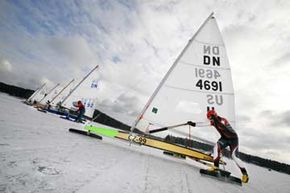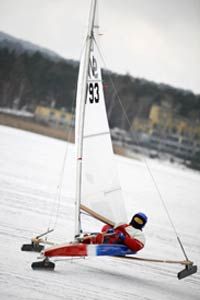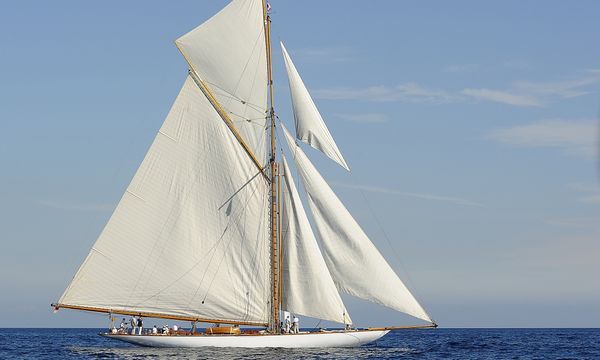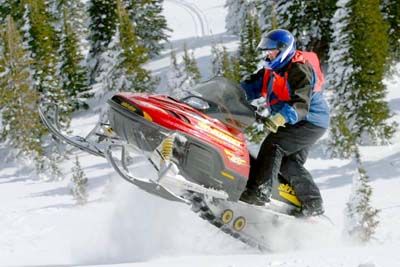In March 2009, Briton Richard Jenkins set the world land sailing speed record by driving his vehicle, the Greenbird, at 202 kilometers per hour (about 126 miles per hour) on a dry lake bed near the border of California and Nevada. Now, Jenkins plans to sail for a new speed record -- on ice! But ice sailing is not the newest thing in the world of competitive extreme sports; rather it's a mode of transportation used at least since the 17th century.
Dutch sailors are believed to have been some of the first to experiment with ice sailing, not to break speed records, but to transport goods across frozen lakes, rivers and bays. They modified their traditional vessels by strapping blades or runners to the hull. This kept their shipping businesses functional and profitable, even during the long winter months. In the spring, when the "soft water" returned, they simply removed the runners and set sail as usual.
Advertisement
It didn't take long before ice sailing began to pique the interest of sportsmen and adventurers. By the 19th century, thrill seekers across Europe were building vessels especially for "hard-water sailing," as the recreational activity was known. Speed attracted people to the sport, and it was not unusual to see ice boats overtake the fastest locomotives of the day. Across the Atlantic, American sailors wanted a piece of the action. Large ice yachts began appearing on the Hudson and Delaware Rivers in the mid-1800s. Iceboat clubs also emerged. The New Jersey-based North Shrewsbury Ice Boat and Yacht Club formed in 1880 and remains in existence today.
Throughout the 1930s and 1940s, ice sailing reached its zenith. Then, interest in the sport slowly began to wane. The rise of the automobile, which brought speed to a wider audience, likely contributed to the decline. But the bigger issue was changing weather patterns. As winters grew warmer and shorter, rivers and lakes -- especially those in the Northeast -- failed to freeze deeply enough to permit safe ice sailing.
Despite global warming, ice sailing is becoming popular again with a new generation of sailors, even those who can pursue the activity only one or two weekends a year. We'll explore the reasons why in this article. Let's start with the ice boat itself, which looks like a cross between a soft-water vessel and a sleigh.
Advertisement




